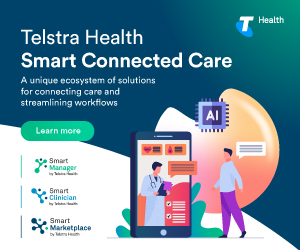5 Things to consider when managing disaster recovery in healthcare
The recent Townsville floods have impacted thousands of people, businesses and health organisations in Northern Queensland – and it’s common to experience a range of intense emotions when left to pick up the pieces.
Some individuals are impacted physically, as well as having concerns about friends and family. Meanwhile organisations such as medical practices and hospitals face extra workloads caused by the disaster, insurance hurdles or are in critical disaster recovery mode.
In this article, we take a look at some key measures health organisations and medical practices can take when it comes to disaster recovery, and share some valuable resources to help the rebuilding journey ahead.
1. The risk to health infrastructure
Floods impact individuals, families and communities and have devastating social, economic and environmental consequences. According to the RACGP, floods are the most expensive type of natural disaster with, direct costs estimated over the period 1967–2005 averaging at $377 million per year.
Floods can compromise or completely disrupt key utilities, such as water and power supplies. Power cuts related to floods may disrupt water treatment and supply plants and even increase the risk of water-borne diseases. Power cuts may also jeopardise proper functioning of health facilities, including cold chain.
The RACGP recommends the following emergency risk mitigation strategies:
- Relocating essential files and equipment to alternate locations, if possible.
- Arranging for heat sensitive medicines to be stored appropriately in another location, e.g. local pharmacy, hospital or other practice with alternate power supply.
- Advising people reliant on CPAP or oxygen concentrators to evacuate early or source an alternative reliable power source.
2. Planning ahead for an emergency
Flood waters come and go, and leave a wave of destruction in their wake. For health organisations, preparation and backup are the two more effective ways to minimise downtime and better continuity of care.
Advance planning can make a considerable difference, so having a preventative program, data backup system and infrastructure monitoring can minimise the recovery groundwork and downtime.
Key preventative measures include:
- Training and assessing all health staff on effective disaster recovery.
- Enlist the help of a trusted IT vendor who can provide an added layer of support during a flood or other natural disaster. Ensure your IT provider is proactively protecting your critical systems.
- Conduct regular preventative maintenance on key emergency systems like generators, UPSs, cooling systems, fire detection and suppression systems.
- Test your plan for emergency preparedness, response and recovery through live exercises during normal operations.
- Establish a ‘go to’ team for support during a natural disaster. The go team can be used to relieve local teams, allowing them to focus on keeping their homes and families safe.
3. Safe and secure location of your data
Is your data held on servers on-premise, or backed up via the cloud? Is your data stored in servers located in flood zones or near fault lines? One way to curb data loss in the event of natural disaster is to consider a solution capable of protecting, recovering and mobilising applications on virtualised IT environments.
For instance, Cloud practice management software stores all information on the Internet ‘the cloud,’ which is then backed up by premium security data centres, like the Microsoft Azure platform.
When your clinical and practice management information is stored on ‘the cloud,’ it is not limited to a physical server, which means you can keep it safely away from a flood-prone area – plus you can access it anywhere, anytime and on any device.
Some additional tips include:
- Secure your data: On the cloud, including clinical and practice management data, patient records and accounting.
- Secure your practice assets: Like the building, computers, and medical/clinical equipment.
- Develop an emergency communication plan: With copies that are easily accessible for your team.
4. Putting it all back together
Restoration and recovery takes time, and there are some key steps to consider when going through the long process of putting it all back together again:
- See what you can salvage: Look for anything can be salvaged above the waterline and anything that can be repaired
- Look at what you need to replace: Office supplies, computers, phone lines, medical supplies and furniture – depending on the level of damage caused
- Consider relocation: If the flood did destroy your primary location, you will have to determine where you will rebuild or relocate – and how long it will take to get back up and running.
5. Additional resources to help with disaster recovery
Emergency events, natural disasters and business disruptions can impact healthcare continuity and the ability to provide essential medical services.
The following resources and factsheets can assist health organisations in the event of flood and disaster recovery:
- RACGP Factsheet on Flooding and its Impact
- RACGP Managing emergencies in General Practice Guidelines
- Townsville flood recovery for health professionals









